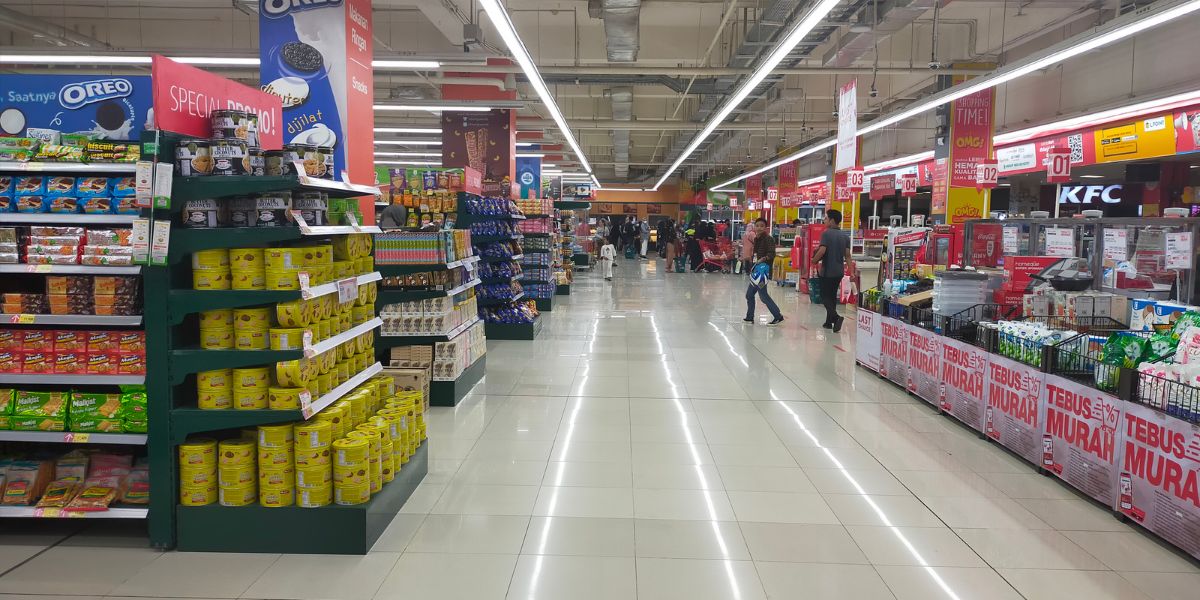Introduction
Retail display fixtures are physical structures designed to hold, organize, and showcase products in stores. These fixtures range from shelves and racks to mannequins and gondolas, serving as essential tools for merchandising.
Effective retail displays play a critical role in guiding shopper behavior. They influence how customers navigate the store, which products catch their attention, and ultimately, what they decide to purchase.
This article explains how the combination of design, function, and strategic placement of fixtures helps retailers boost sales. It focuses on practical aspects that align with retail merchandising strategies, store fixture design, and point of purchase displays.
What Are Retail Display Fixtures?
Retail display fixtures are essential components used to present products systematically. Their main purpose is to organize merchandise, making it accessible and visually attractive.
Common types include shelving units, racks, gondolas, pegboards, and mannequins. Shelving is versatile for various products, while gondolas are common in supermarkets for aisles. Pegboards and slatwalls allow flexible hanging options, and mannequins display apparel effectively.
Fixtures directly impact the customer journey by determining product visibility and ease of access. Proper fixture selection and arrangement enhance shopping flow and product interaction.
The Psychology Behind Retail Displays
Visual merchandising leverages psychology to influence purchasing decisions. Color, for example, attracts attention and evokes emotions; bright colors stimulate excitement, while softer tones induce calmness.
Products placed at eye level gain more views and higher sales. Lighting highlights key areas and products, guiding shopper focus. The layout and flow created by fixtures affect how customers move through the store and which products they encounter first.
The “First 5 Seconds” rule suggests that initial impressions upon entering a store strongly affect buying behavior. Well-designed displays in this timeframe capture interest and encourage exploration.
Key entities include consumer psychology, visual hierarchy, and decision-making cues.
Design Elements That Influence Sales
Aesthetic Appeal
Fixture design must align with store branding. Color choices and materials like metal, wood, or acrylic contribute to both look and durability. Wood may convey warmth, while metal offers a modern feel. Fixtures should complement products without overpowering them.
Layout Optimization
Store layouts—such as grid, loop, or free-flow—dictate fixture placement. Grid layouts support straightforward navigation, loop layouts encourage full-store circulation, and free-flow allows casual browsing. Proper fixture positioning prevents bottlenecks and improves customer movement.
Modularity and Flexibility
Modular fixtures allow easy adjustment to accommodate new products or seasonal promotions. Flexibility reduces costs by enabling reuse and adaptation without full replacement.
SEO keywords: retail display design, store layout strategies, modular display fixtures.
Functional Features That Maximize Performance
Space Efficiency
Vertical fixtures maximize floor space by utilizing height, while horizontal displays like tables or gondolas allow for bulk product presentation. Endcaps and corners can highlight featured products or promotions efficiently.
Durability and Maintenance
Materials such as powder-coated steel, high-impact plastics, and tempered glass ensure longevity and withstand frequent use. Fixtures with smooth surfaces are easier to clean, maintaining hygiene and store appearance.
Accessibility and Ergonomics
Fixtures should comply with ADA standards, providing ease of access for all shoppers. Ergonomic designs help customers reach products comfortably and assist staff in stocking and maintenance.
Entities include fixture material properties, durability ratings, and ergonomic design.
Strategic Fixture Placement for Sales Impact
High-Traffic Zones (Hot Spots)
Fixtures placed near entrances, checkouts, and main aisles attract maximum attention. These areas are ideal for promotional items and high-margin products, increasing impulse purchases.
Product Grouping and Cross-Merchandising
Grouping related items together encourages larger purchases. Fixtures must support displaying complementary products, such as pairing shoes with socks or phones with chargers.
Seasonal and Promotional Displays
Temporary fixtures highlight limited-time offers and seasonal products. Rotation of displays keeps the store environment dynamic, maintaining shopper interest.
Keywords: strategic merchandising, impulse buying fixtures, fixture placement.
Industry-Specific Fixture Recommendations
In grocery stores, gondola shelving and refrigerated fixtures accommodate diverse products requiring varied storage conditions. Apparel retailers benefit from mannequins and wall-mounted shelving that showcase clothing attractively. Electronics stores use secure, interactive displays to prevent theft and allow product interaction. Cosmetics retailers employ tester stands and tiered acrylic fixtures to present products clearly and encourage sampling.
Attributes such as product type, security requirements, and brand experience guide fixture selection.
Technology Integration in Modern Fixtures
Modern retail fixtures integrate smart technology like digital signage and RFID tracking. Smart shelves monitor inventory in real time, while interactive touchscreens engage customers with product information. Data collected through these technologies supports shopper behavior analysis, enabling targeted merchandising.
Entities involved include retail IoT, digital retail displays, and smart merchandising solutions.
Choosing the Right Fixtures for Your Store
Selecting fixtures requires balancing budget with return on investment. Fixtures must align with the store’s target market and overall goals. Evaluating supplier quality and service ensures long-term benefits and reduced downtime.
Keywords: best retail fixtures, store fixture supplier, ROI retail displays.
Case Studies and Success Examples
Retailers employing advanced fixture strategies report increases in dwell time and conversion rates. For example, stores using modular, tech-enabled displays have achieved measurable sales uplift. Trade publications and retail design agencies provide documented case studies demonstrating these outcomes.
Final Tips for Maximizing Fixture Impact
Maintaining fixture effectiveness requires regular rotation and updates to displays. Coordinating fixtures with lighting and signage enhances product visibility. Training employees on upkeep and restocking ensures displays remain attractive and functional.


